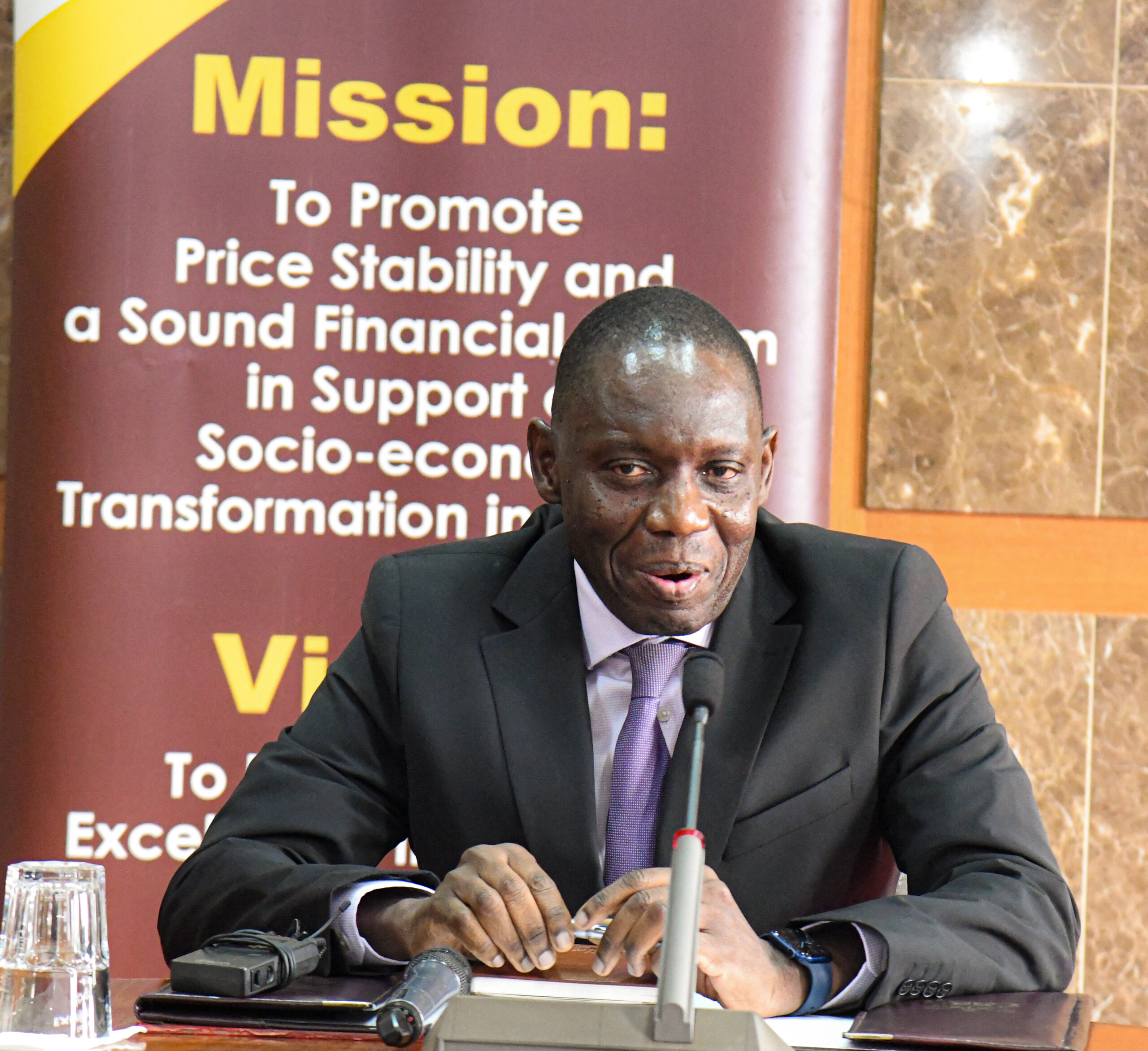BoU maintains 9.75% rate, cites global uncertainty, high costs

Dr. Michael Atingi-Ego, BoU Governor. Photo: Courtesy.
The Bank of Uganda (BoU) has maintained the Central Bank Rate (CBR) at 9.75% for the tenth consecutive month, citing global economic uncertainty, geopolitical tensions, and the need to manage inflation without stifling domestic growth.
The decision was announced following the Monetary Policy Committee (MPC) meeting held on August 12, 2025. The BoU emphasized that macroeconomic stability remains intact, with inflation contained and growth holding steady. However, the central bank also flagged key structural issues driving up the cost of doing business in the country.
“The exchange rate is only one tool,” said Deputy Governor Michael Atingi-Ego. “We need to look at a broader aspect because there are a number of factors that affect the cost of doing business and the cost of exporters.”
Inflation in check, but caution remains
Headline and core inflation for July 2025 stood at 3.8% and 4.1%, respectively; both below the medium-term target of 5%. Over the past year, inflation has averaged 3.4% for headline and 3.9% for core inflation, supported by a stable exchange rate, favorable global commodity prices, and prudent monetary policy.
The BoU projects core inflation to stay within a range of 4.5% to 4.8% for FY2025/26, slightly lower than earlier forecasts.
Still, the outlook isn’t risk-free. According to the MPC, downward risks to inflation include a stronger Ugandan shilling and lower global oil prices. On the other hand, inflationary pressures could arise from exchange rate depreciation, higher import costs, increased government spending, and adverse weather patterns.
“We cannot continue intervening because we want to prop up the exporter,” Atingi-Ego warned. “That means we will be buying more currency, injecting more shillings into the economy and that can be inflationary if we don’t mop it. But if we mop it, we drive interest rates even higher.”
Uganda’s economy continues to show resilience. According to data from the Uganda Bureau of Statistics (UBOS), real GDP growth for FY2024/25 is estimated at 6.3%, up from 6.1% the previous year. Growth has been driven by export expansion, low inflation, stable exchange rates, and government infrastructure investment.
The central bank expects GDP to grow between 6.0% and 6.5% in FY2025/26, with further strengthening in the medium term. However, this outlook is vulnerable to global headwinds, including commodity price volatility, tighter international financing conditions, and supply chain disruptions.
Atingi-Ego underscored that structural costs; particularly in energy, transport, labour, and water are hurting Uganda’s export competitiveness and domestic production.
“We need to have a conversation on those factors rather than just focusing on the exchange rate,” he said. “You need to strike that balance. How do you then ensure that you minimise the losses by pursuing prudent policies?”
Monetary Policy stance remains cautious
The CBR remains at 9.75%, with the rediscount and bank rates set at 12.75% and 13.75%, respectively. The MPC reiterated that this stance balances the need to control inflation while supporting economic activity.
Future adjustments, the Bank said, will depend on incoming economic data and evolving risks, both local and global.
Bottom Line
While the Bank of Uganda has succeeded in keeping inflation in check and supporting growth, it remains cautious. The bigger challenge, as acknowledged by the Deputy Governor, lies in addressing the high cost of doing business, an issue beyond the central bank’s sole control.
The call now appears to be for a broader policy response, beyond monetary tools, to improve Uganda’s competitiveness in a challenging global environment.




